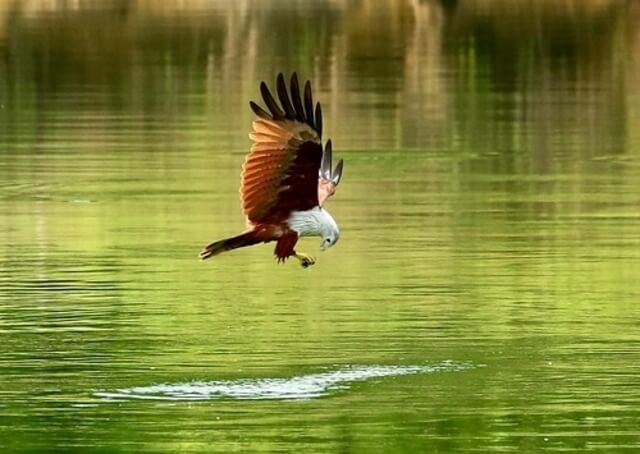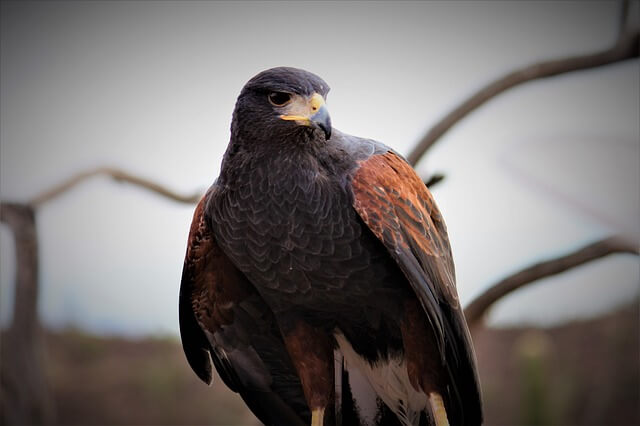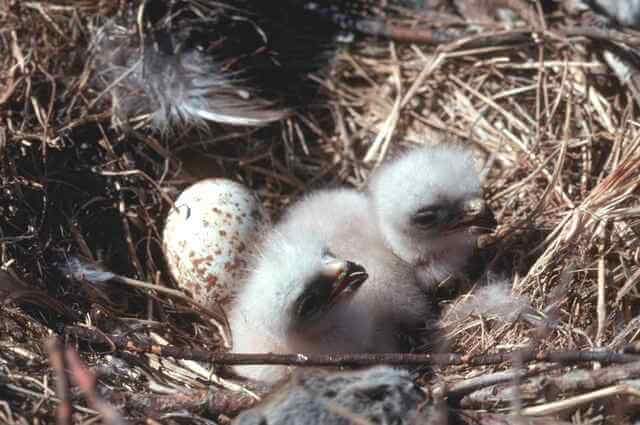Get ready to spread your wings and dive into the captivating world of hawks! Wondering why these feathered predators are such fascinating creatures? Look no further!
In this article, we’ve rounded up 32 incredible fun facts about hawks that will leave you soaring with excitement. So, are you ready to take flight? Let’s embark on this wild avian adventure together!
Table of Contents
- 1 Understanding the Hawks Classification
- 1.1 There are about 270 species of Hawks worldwide.
- 1.2 There are 25 species of Hawks in the United States.
- 1.3 The Red-tailed Hawk Is North America’s Most Common.
- 1.4 All Hawk Species Hunt Their Prey From the Air.
- 1.5 The Smallest Hawk in North America is the Sparrowhawk.
- 1.6 The World’s Largest Hawk is the Ferruginous Hawk.
- 1.7 A Red-tailed Hawk is the Largest North American Species.
- 1.8 The Peregrine Falcon is the World’s Fastest Animal.
- 1.9 Hawks Can Be Found All Over the World Except for Antarctica.
- 1.10 Hawks are also called Buzzards.
- 1.11 Hawks eat small mammals, snakes, fish, birds and amphibians!
- 1.12 Hawks typically nest high up off the ground.
- 1.13 Hawks can live up to 30 years in the wild.
- 1.14 Red-tailed Hawks can eat as much as five pounds of food per day.
- 1.15 The Hawk’s talons have an incredible grip force.
- 1.16 A baby Hawk is called an ‘Eyas’.
- 1.17 Red-tailed hawks are Monogamous and may Mate For Life.
- 1.18 Hawks are Solitary Birds, But They Come Together to Mate.
- 1.19 The Four Types of Vocalizations that a Hawk Uses to Communicate.
- 1.20 A Hawk’s Talons Can Grow Up to 2″ Inches Long.
- 1.21 A Female Hawk is 25-30% Larger Than a Male.
- 1.22 Hawks Will Typically Migrate Thousands of Miles Every Year.
- 1.23 A Group of Hawks is called a “Kettle”.
- 1.24 Hawks Are Part of the Raptor Family.
- 1.25 Male Hawks Perform Courtship Dances Called: Sky-Dances.
- 1.26 Hawks can see 5x better than humans.
- 1.27 Hawks Have Been Seen in Various Habitats.
- 1.28 Hawks have Passive Soaring Wings.
- 1.29 Hawks Can See a Field Mouse From Over a Mile Away.
- 1.30 A Female Hawk Lays Between 2 to 5 Eggs Every Year.
- 1.31 A Hawk Can Lift Up to 5 Pounds With Their Feet.
- 1.32 Hawks Best Time of Day for Hunting is Dusk.
- 2 Author
Understanding the Hawks Classification
- Scientific Name: Buteo
- Class: Aves
- Order: Accipitrformes
- Family: Accipitridae
There are about 270 species of Hawks worldwide.
There are about 270 species of hawks across the world. The types of hawks vary greatly from continent to continent, and their physical characteristics also differ depending on where they live.
There are 25 species of Hawks in the United States.
The United States is home to approximately 25 species of hawks. These birds vary in size, shape, and hunting style; however, they all have one thing in common: they’re fearsome predators that use their sharp talons and razor-sharp beaks to capture prey.
Below are some of the most common hawk species found throughout the USA:
- Red-tailed Hawk
- Northern Goshawk
- Northern Harrier
- Sharp-shinned Hawk
- Cooper’s Hawk
- Common Black Hawk
- Great Black Hawk
- Crane Hawk
- Gray Hawk
- Roadside Hawk
- Broad-winged Hawk
- Zone-tailed Hawk
- Rough-legged Hawk
- Short-tailed Hawk
- White-tailed Hawk
- Harris’s Hawk
- Swainson’s Hawk
- Ferruginous Hawk
- Red-shouldered Hawk
The Red-tailed Hawk Is North America’s Most Common.
The Red-tailed Hawk is the most common hawk found throughout North America. They can be found all over the continent, and they are considered to be one of the few large hawks that make their home near human settlements.
All Hawk Species Hunt Their Prey From the Air.
All hawk species hunt their prey from the air, usually by catching it with their talons or catching it in midair with their sharp, hooked beaks.
The Smallest Hawk in North America is the Sparrowhawk.
The American Kestrel (Sparrowhawk) is the smallest hawk in North America. It lives throughout North America and parts of Central America, as well as Mexico.
It weighs 2.8-5.8 oz (80-165 g), has a wingspan of 19.7-24.4 inches (50-62 cm), and an average length of 8.27-12.6 inches (21-32 cm).
The kestrel feeds on small mammals, such as rodents, reptiles, amphibians, and insects. It also sometimes hunts small birds such as doves or quail.
The World’s Largest Hawk is the Ferruginous Hawk.
The Ferruginous Hawk is the largest hawk in the world. They are found in North America, Central America, and parts of South America. They are very adaptable to different habitats, from deserts to forests to tundra and even mountainsides.
The bird’s body length ranges from 22.7-27.6 inches (55-70 cm), with a weight range of 34.5-73.2 ounces (2.15 lb.-4.57 lb.). Their wingspan can be anywhere from 52.0 to 56.3 inches (132 to 143 cm).
Ferruginous Hawks prey on small mammals such as rabbits, squirrels, mice, and hares; reptiles like lizards; birds including wild turkeys, grouse, and prairie chickens; and large insects.
A Red-tailed Hawk is the Largest North American Species.
The Red-tailed Hawk (Buteo jamaicensis) is the largest North American species, with a wingspan up to 5 feet across. This hawk was named for its reddish tail feathers, which are most noticeable in flight.
The Peregrine Falcon is the World’s Fastest Animal.
The Peregrine Falcon is the world’s fastest animal. These birds can reach speeds up to 242 miles per hour when diving for prey, which is faster than any other creature on Earth.
Hawks Can Be Found All Over the World Except for Antarctica.
Hawks are found all over the world except for Antarctica. They live in every continent but Antarctica, including North America, South America, Europe, Asia and Africa. There are also some hawks that can be found in Australia and New Zealand.
Hawks are also called Buzzards.
Hawks are a type of bird that are also known as common buzzards. They have been known to be one of the most popular types of birds in North America, Europe and Asia.
Hawks eat small mammals, snakes, fish, birds and amphibians!
Hawks are carnivorous birds that have a variety of prey, such as small mammals, snakes, fish, birds and amphibians. They feed on insects and other small animals too. Hawks can also be opportunistic hunters if the opportunity arises for them to do so!
The hawk is a very important bird to have in the environment because they help control populations of rodents and other animals that can be pests for humans.
Hawks typically nest high up off the ground.
Hawks typically nest high up off the ground to avoid predation. One of their common traits is that they nest at heights well above the ground to avoid predators such as raccoons, squirrels, and humans. They do this by nesting on trees or other structures which extend from higher surfaces, like cliffs or utility poles.
Hawks can live up to 30 years in the wild.
In general, hawks live between 15 and 20 years in the wild. There are a few exceptions to this rule: some species can live as long as 30 years, while others may only live up to 10. One of the reasons for these discrepancies is because different species of hawks have different living conditions and lifestyles, which lead to varying lifespans.

Red-tailed Hawks can eat as much as five pounds of food per day.
Red-tailed hawks are among the most common birds of prey in North America. They can eat as much as five pounds of food per day, which is twice their body weight. They often hunt and feed on rodents, rabbits, frogs, and snakes.
The Hawk’s talons have an incredible grip force.
The hawk’s talons are a marvel of engineering. They are so strong that they can grip prey with a force up to 500 pounds per square inch (PSI). This makes them very dangerous. A single talon can exert an upwards pressure on the ground as much as nine times its own weight, and they are so sharp that it only takes one claw’s tip to puncture through skin.
A baby Hawk is called an ‘Eyas’.
A baby hawk is called an ‘Eyas’. The word ‘eyas’ comes from the French language and means “nestling.” The hawks start off in a nest. As they grow, they need to be released so that they can fly around and learn to hunt on their own. This is usually done when the birds are about six weeks old.
Red-tailed hawks are Monogamous and may Mate For Life.
The red-tailed hawk is a bird that does not stray from its partner and usually lives with them until they die. Red-tailed hawks also have a strong desire to care for their young ones together with their mates, which makes them excellent parents. They will continue caring for the chicks until they become independent adults in two years or so.
Hawks are Solitary Birds, But They Come Together to Mate.
Hawks are usually solitary creatures, but they come together for the mating season. This is typically from March through April or May depending on where they live. Hawks will form pairs during this time and stay together until the eggs hatch in early summer and the chicks leave their parents to find a territory of their own.
The Four Types of Vocalizations that a Hawk Uses to Communicate.
Hawks have four types of vocalizations that they use to communicate with other hawks: screams, growls, hoots and screeches. These different sounds are important for a hawk to identify its own species, as well as potential threats from predators. A scream is often used when defending territory or searching for prey.
The sound of a growl can be heard during courtship rituals, where the male may try to impress the female by attacking her while screaming at her. Hoots are typically used in interactions with other hawks, and screeches are used when a hawk feels threatened or angry.
A Hawk’s Talons Can Grow Up to 2″ Inches Long.
A hawk’s talons can grow up to 2 inches long. They are not the same size throughout the entire length of their foot, but rather they get longer as they move closer to the end of their toes. These talons can help them catch prey and tear it apart before eating it.

A Female Hawk is 25-30% Larger Than a Male.
Female hawks are on average 25-30% larger than males. This is due to the female needing more energy and nutrients for egg production.
Hawks Will Typically Migrate Thousands of Miles Every Year.
Hawks will typically migrate thousands of miles every year. In fact, some hawks can travel up to 3,000 miles in a single flight. The distance they fly varies depending on the species and their need for food. Most migrations happen during spring or fall when weather conditions are favorable for flying long distances at high altitudes.
A Group of Hawks is called a “Kettle”.
A group of hawks is called a “Kettle”. This word is used to describe a group of raptors flying in circles.
Hawks Are Part of the Raptor Family.
A hawk is a bird of prey, and can be found in all parts of the world. They are part of the raptor family, which includes birds like vultures and eagles.
Male Hawks Perform Courtship Dances Called: Sky-Dances.
In a typical sky-dance, the male will fly at high altitudes while calling to attract attention from below. The female will respond by flying and making vocalizations of her own. Eventually, the male will land near the female and copulate with her on the ground or in a nearby tree.
Hawks can see 5x better than humans.
Hawks are powerful predators that have binocular vision and can see 5x better than humans. Binocular vision is when both eyes focus on the same object at the same time. This gives hawks a great field of view to hunt prey in because they have an overlap in their sight lines.
Hawks also have keen color perception, which means they can tell red from green or blue very easily. They are able to pick out detail like hair or feathers from far away distances.
Hawks Have Been Seen in Various Habitats.
Hawks can be found in various habitats such as forests, deserts, grasslands, mountains, and even near water sources like rivers or lakes.
Hawks have Passive Soaring Wings.
Hawks are very large birds that have passive soaring wings. Passive soaring is when a bird does not flap its wings, but uses the wind to glide for long periods of time. Hawks use this method to hunt and migrate across vast distances without exerting much energy.
Hawks Can See a Field Mouse From Over a Mile Away.
Hawks are known for their keen eyesight, and can see a field mouse from over a mile away. This is due to the fact that they have a field of view three times as wide as humans and up to twenty-eight times sharper.
What may be even more amazing, though, is how far away hawks can see something in detail – sometimes over a mile! A typical hawk’s eye has a visual acuity of about 20/2, meaning it can distinguish an object at 20 feet (6 meters) from 200 feet (60 meters).
A Female Hawk Lays Between 2 to 5 Eggs Every Year.
A female hawk usually lays between two and five eggs every year. The incubation period of 35 days follows once they have been laid. After the hatching, the parents take care of their chicks for about 40-50 days until they are ready to leave the nest.
A Hawk Can Lift Up to 5 Pounds With Their Feet.
It is not uncommon for a hawk to catch prey that weighs up to 2 pounds, but they are capable of catching prey weighing as much as 5 pounds if need be. In order to fly away with the captured prey, the bird has to hold it in its talons, so it does not slip out during flight.
Hawks Best Time of Day for Hunting is Dusk.
Hawks hunt at dusk because they can easily spot their prey on the ground from above with little or no shadows which allows them to get close enough for an easy catch. This makes it harder for prey animals on the ground below to see them coming, making them more likely to be seen.





